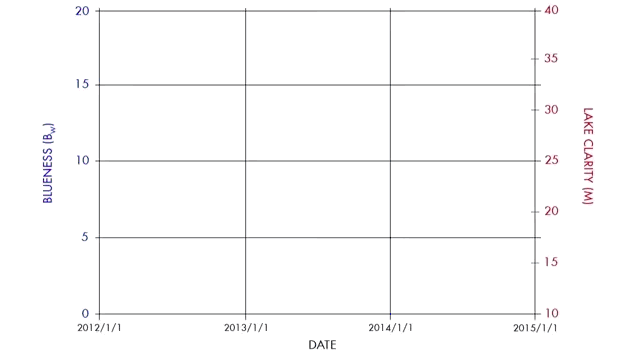What makes Lake Tahoe so spectacularly blue?
The cobalt color was long attributed to the unusual clarity of the water in the lake, which is located along the California-Nevada border. But surprising new research suggests that the real explanation lies with algae that live in the lake.
"The result was totally unexpected, since we all expected that clarity and blueness of the lake is correlated," Dr. Shohei Watanabe, a postdoctoral researcher at the University of California, Davis and the leader of the research, told The Huffington Post in an email. "Clarity is mainly controlled by fine inorganic sediments but blueness is mainly controlled by algal populations."

Using data from a NASA research buoy, Watanabe measured the lake's blueness and then combined this "blueness index" with measurements of the so-called "Secchi depth" -- the depth at which a white disk remains visible as it is lowered into the water.
What did he find? The bluer the lake, the lower the clarity of its water. The lake is actually bluest when algae concentration is low.
The finding suggests that the need for a change in conservation efforts, which traditionally have focused on controlling sediment to keep the lake water clear.
"With the findings showing importance of algae for water color, control of nutrient load (both nitrogen and phosphorus) will also be important to keep the lake blue," Watanabe said in the email.
The research was published on July 23, 2015, in the university's Tahoe: The State Of The Lake Report 2015.
Also on Huffington Post...
